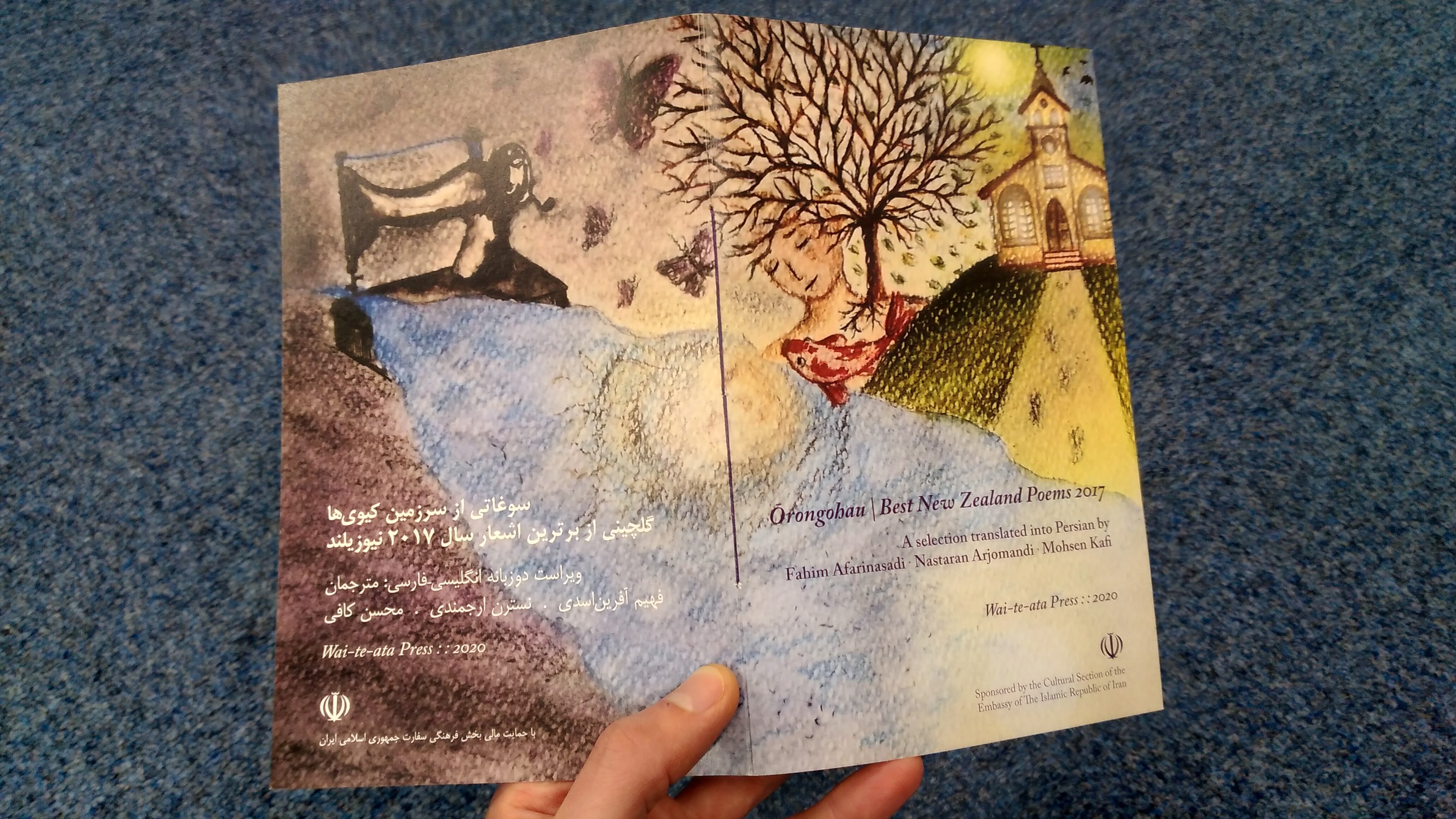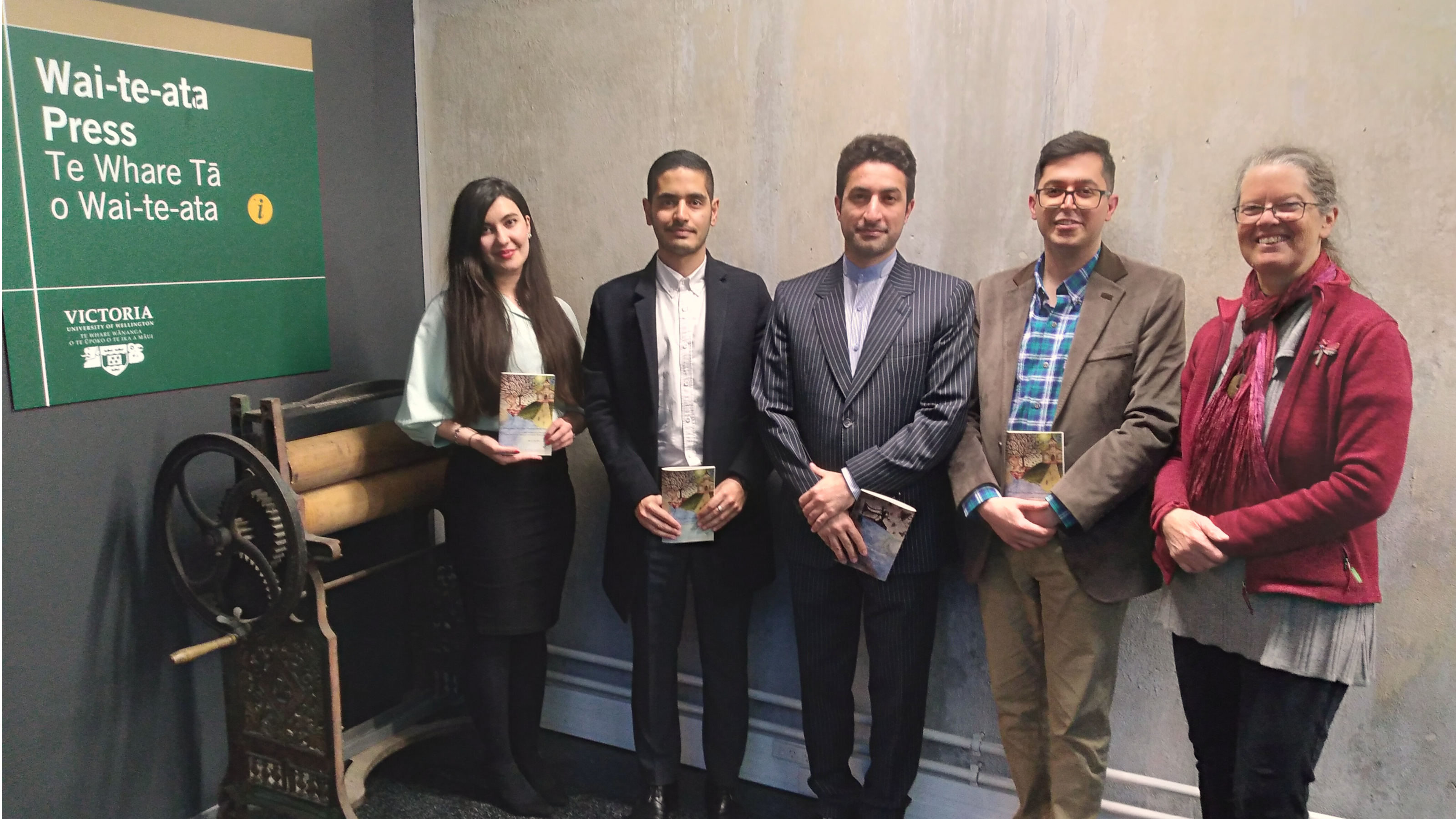Persian bilingual edition 'Best New Zealand Poems 2017'
The latest constellation of Aotearoa’s poetry stars
Introducing Ōrongohau | Best New Zealand Poems 2017, then-New Zealand Poet Laureate Selina Tusitala Marsh remarked:
Everybody loves free books (excluding my sons). I accepted this invitation to judge 2017’s batch of newly published poems because frankly, I wanted the books. I wanted to be able to map the latest constellation of Aotearoa’s poetry stars and navigate the various poetic journeys being offered from a particular time and place. I wanted to be inspired. After reading what seemed like, say, 3000 plus poems, I got what I wanted.
Publishing in the time of Coronavirus

In the age of Coronavirus, this bilingual edition of Best New Zealand Poems has assumed a different shape. Lockdown has both focused our energies and unleashed our creative options: different ways of working, affirming the value of community, reflecting on what it means to be human. We commissioned three young Iranian translators and one Iranian illustrator who selected ten diverse voices from the original twenty-five poems, superbly chosen by Selina Tusitala Marsh. In the process, we have highlighted the visual and aural beauty of the Persian language and the rich cross-cultural connections between past and present, tradition and innovation.
Creative insights

This collaboration has been both invigorating and challenging. As Fahim Afarinasadi remarks, “translation is neither a fixed concept nor a fixable practice. Many linguistic and cultural variables (such as puns, intertextual references, or taboos) determine how a poem is translated. And the expectations of markets, publishers and readers count as much as the habitus of authors and translators. Translating contemporary New Zealand poetry made me experience the process of translation in all its complexity. In order to overcome the challenges posed by these poems, and recreate their textual and contextual features in Persian, adaption seemed to me to be the most effective and rewarding strategy.”
Adaptation became a theme shared by all three translators. Nastaran Arjomandi, for example, “endeavoured to preserve the form, content and sense of each piece as much as possible and to revive in the other, what could hardly survive. Gregory Kan’s mirror dance reflecting the two opposing senses of unity and separation between the two lovers was represented in the opposing, repetitive and passive senses of the visual form. Cartographies I by Makyla Curtis evoked a sewing pattern that embodied the path of life, including footsteps and rubble along the way, linking الگو (cartography), نخ (thread), لبهدوزی and کشیدن (border and tucking), with میشکافیم (delve into) and ترسیم کنیم (map).”
Mohsen Kafi responded to the Aotearoa New Zealand setting and the deep relationships between place and identity shared by tangata whenua and tangata tiriti. Like Karlo Mila, he wrestled, with “defining so powerful and so personal a concept as ‘mana.’ Rather than attempting an equivalence, I rendered it in transliteration.” The effect of breathlessness and frustration evident in Emma Shi’s work was a significant translational challenge as was accommodating the lack of gendered pronouns in Persian.
Translation is, after all, a process of negotiation: privileging literary rather than literal equivalence; providing a reading experience of enjoyment rather than effort; taking some liberties with the letter of the poems whilst keeping faith with their spirit. Translating an online, virtual collection into a physical, material form was equally a matter of sensitive negotiation. Traditional Persian book structures, fonts and couplet layouts were interlaced with contemporary publishing conventions and readerly expectations. Designing a dos-à-dos [back-to-back] book with cross-cultural whisperings weaving a text-ural underburden was coupled with a commissioned book cover illustration.
Niloofar Arjomandi is a Kerman-based artist specialising in evocative mixed media collages and paintings. For this publication, she combined watercolour and coloured pencil techniques that linked several concrete and abstract concepts. “Drawn in by tone and mood, I entered into the imaginary worlds of each poem, where every single word and its meaning were intermingled. Despite the challenges involved in this process, I selected key elements that could both visualize the tonal inflections of the poems and work together to create a unified, dynamic image.” The counterpointing of darkness and light, shadow and sun generated a composition that moves across the book spine seamlessly linking the printerly worlds of an English-speaking reader with the codex expectations of a Persian audience. As she notes, “regardless of the fact that each poem was a unique entity, I aimed to fashion an image that could create a bridge between the poets, the translators and their readers.”
Acknowledgments
Creativity builds bridges and breaks down barriers. In addition to our collaborators, we are grateful to the International Institute of Modern Letters and The New Zealand Centre for Literary Translation for supporting the Best New Zealand Poems in Translation book series, a bequest from the estate of Dr Roger Ridley-Smith to cover our translation, royalties and design costs, and The Embassy of the Islamic Republic of Iran for sponsoring the printing.
Support our publications
To order your Persian bilingual edition of Ōrongohau | Best New Zealand Poems 2017, please download, complete and email the BNZP order form to wtapress@vuw.ac.nz. The order form includes payment instructions.
